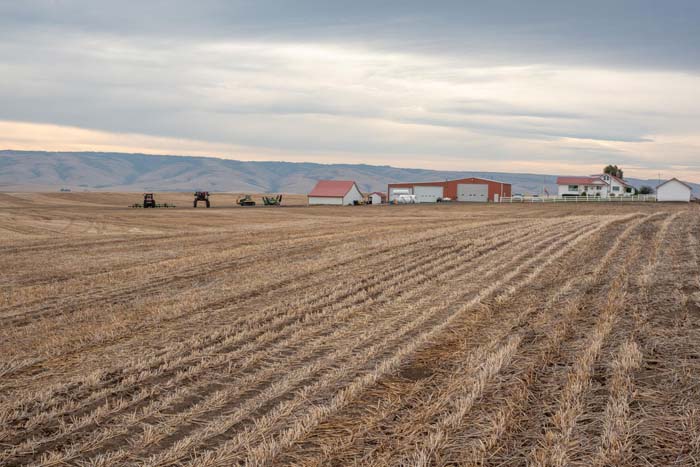2023 wheat harvest slightly below average
Published 5:00 am Saturday, October 21, 2023

- Stubble is all that remains Sept. 25, 2023, after wheat harvest in a field off Highway 335 near Helix. As the fall rolls through, farmers prepare for the next crop.
PENDLETON — The 2023 wheat harvest was a little below average this year, following an “excellent” 2022 harvest.
Trending
Amanda Hoey, CEO of the Oregon Wheat Growers League and Oregon Wheat Association, said most of Oregon has completed wheat harvest for the year, with the exception of higher elevation areas in Wallowa County and some producers in Klamath Falls.
She said the wheat yields this year in Oregon were below average, as well as the quality of wheat. This is due to drier conditions during key growing time in April. Precipitation levels were higher in April 2022, which Hoey said led to high levels of production and quality with wheat.
Ben Maney, farmer at Maney-West Farms north of Pendleton and past president of Oregon Wheat Growers League, said spring was challenging for the whole area.
Trending
“It was dry and hot,” he said. “In April, May we got dry, and there wasn’t much moisture compared to normal years.”
Maney said his farm yielded 80% of their average numbers this year. Like most wheat producers in Umatilla County, Maney-West Farms produces an average of 50 bushels per acre. The operation plants about 1,000 acres of the 2,000-acre farm each year.
In 2022, Maney said his farm had above average yields, but declined to give the exact amount.
An August report from the U.S. Department of Agriculture with statistics from the 2022 harvest and forecast results for the 2023 harvest estimates Oregon will produce 40.1 million bushels of winter wheat this year. The 2022 harvest came to 48.9 million bushels produced.
The majority of wheat Oregon produces is soft white wheat, and typically a soft white winter wheat. Hoey said Umatilla County, which produces the most wheat in Oregon, primarily produces soft white wheat.
This year’s wheat has slightly higher protein levels and lower test weights, Hoey said. Desirable soft white wheat generally has lower protein levels and higher test weights.
Test weights refer to the standard weight of a bushel. A lower test weight typically indicates a stressed crop, such as a crop enduring dry conditions, Hoey said.
“We produce a high quality wheat overall in Oregon,” Hoey said. “Even when we have a stressed crop.”
For Pacific Northwest soft white wheat, Hoey said average test weights this year came to 60.2 pounds/bushel, which is below the five-year average of 61.1 pounds/bushel. Last year test weights came to 61 pounds /bushel.
Hoey said the Oregon wheat is still No. 1 grade wheat, based on USDA standards for test weights.
Like most of Umatilla County, Maney’s farm primarily has soft white wheat. He said the county’s weather is a little less warm and dry compared to neighboring counties, such as Morrow County, which is best suited for the soft white wheat.
Morrow County grows more hard red wheat, he said, a crop where higher protein counts are desirable.
He said soft white wheat has around 8% protein for standard quality. This year, he said some wheat had up to 12% or 15% proteins as a result of the hotter, drier weather.
His farm, like most in Umatilla County, is a dryland farm, meaning the farm does not use irrigation or have pools of water to access on demand. Maney said his farm works to conserve moisture throughout the year, but otherwise relies on natural rain and weather.
“We’re dependent on what Mother Nature gives us,” he said.
The majority of moisture for the farm comes during the winter and springtime, and is used to carry the crop through harvest.
Despite the higher protein levels, Hoey said the wheat from this year still has comparable functionality for the grain customers receive.
Maney said he believes the harvest this year was good overall, and went well considering the weather conditions. He noted while farmers compare success year to year, many also look at long-term success over three to five years, rather than focusing on one particular crop.
“I think it was a good harvest, I think it was a safe harvest, I think equipment ran well,” Maney said, noting local farmers are feeling optimistic about next year. “I mean, you can’t really ask for more.”
“We produce a high quality wheat overall in Oregon,” Hoey said. “Even when we have a stressed crop.”
— Amanda Hoey, CEO, Oregon Wheat Growers League









